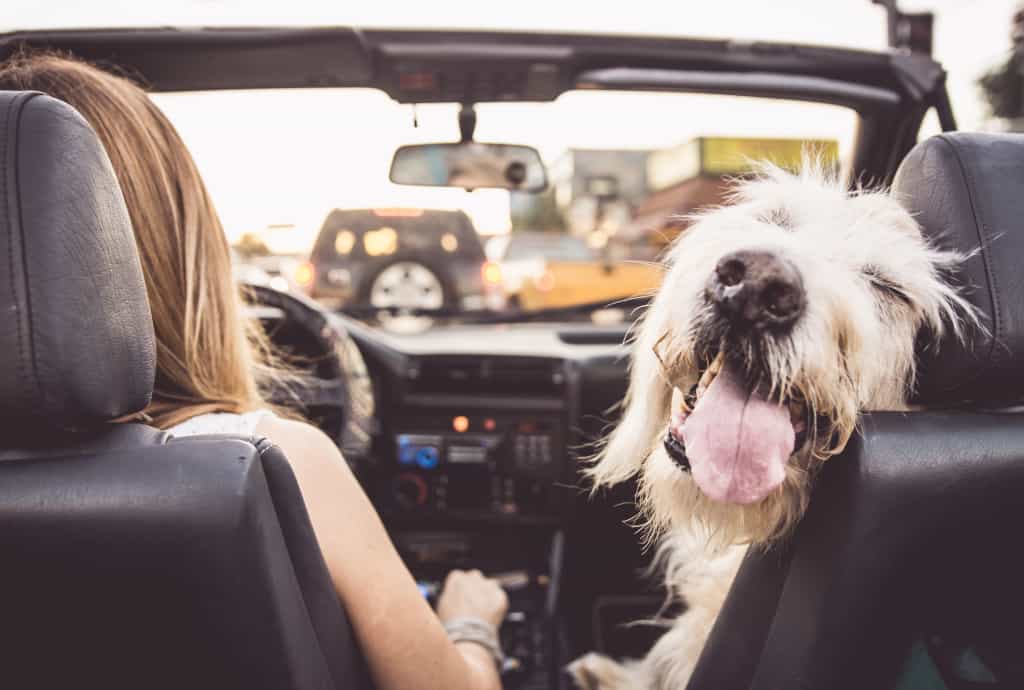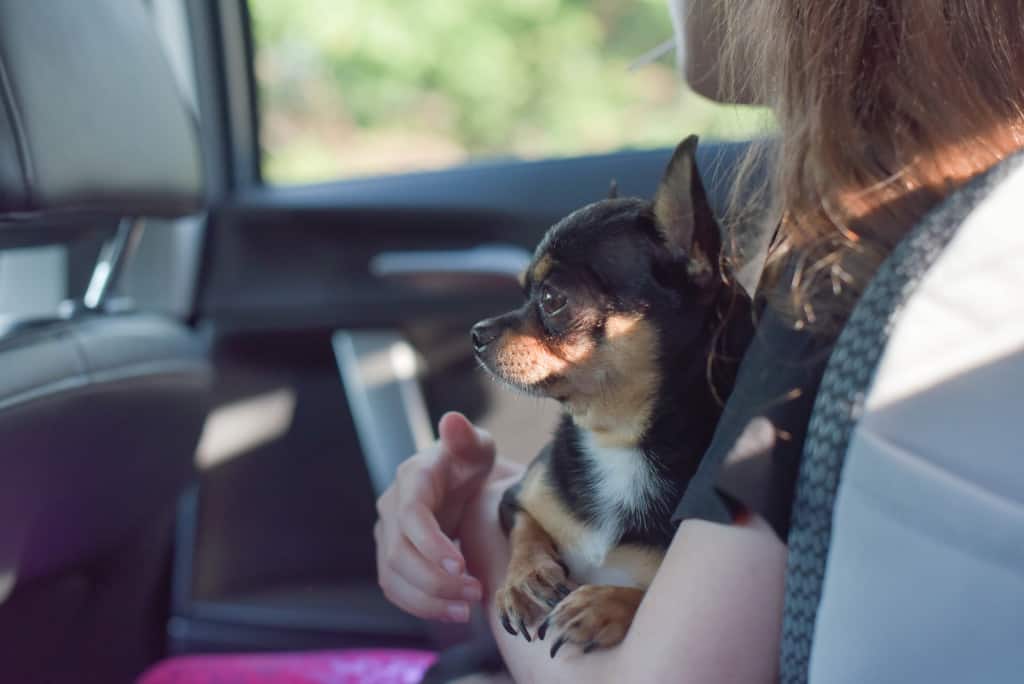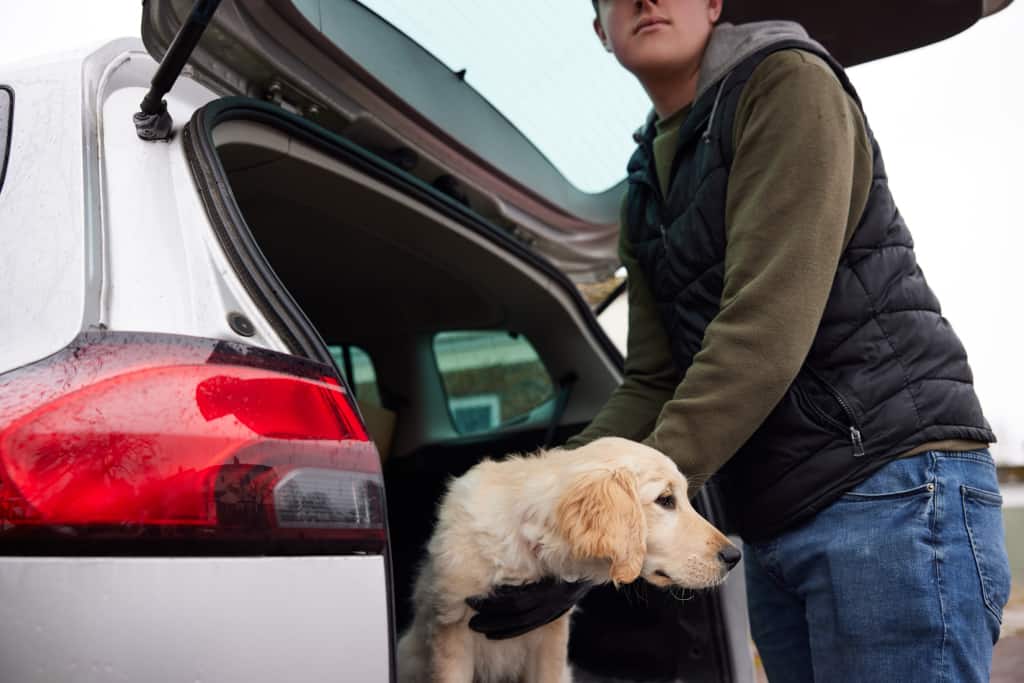
Nothing is worse than being in a car with your dog and having them start to throw up. It’s gross, it leaves a mess on the floor of your vehicle, and you’re going to have an even harder time cleaning up when you get home. No one wants that! Most importantly, nobody wants their dog to feel sick and miserable!
It’s a common misconception that only humans get motion sickness, but it is indeed possible for dogs as well. And some canines are more prone to motion sickness than others. If you own a dog who suffers from this problem and would love for them to be comfortable on the road trip but can’t figure out what to do, you’ve landed on the right page!
This article will tell you everything there is to know about dog car sickness. You will learn why your dog is experiencing motion sickness, what causes that, how to treat it, and what are some of the preventative measures you can take before you go on your trip and while driving.
Read More:
Why Do Dogs Get Car Sick?
First of all, why do dogs get motion sickness during car rides? Puppies and young dogs tend to experience that. Why is that? Well, there are two reasons why your canine companion might suddenly have an upset stomach and become nauseous.
The first reason that they will feel uncomfortable in moving vehicles like cars or boats is that part of their inner ear structures are not fully developed to help them deal with the change in motion yet. That causes them to be unable to properly process the information about their environment when on a car ride, in which their vestibular system or vestibular movement-sensing inner ear tell them they are moving, but their eyes suggest otherwise. Most dogs outgrow motion sickness, although some don’t.
Secondly, dog motion sickness comes as a result of anxiety or stress, which usually happens in adult dogs, and that was due to the lack of exposure to traveling in a car. The severity depends on how often they have been exposed to such situations and their previous experience with car rides. Remember, dogs have far more sensitive noses and ears than us humans. The sudden stop and input of sights, sounds, and smells such as an ambulance siren, exhaust fumes from cars passing by at high speeds, and big trucks coming towards you on the road can be an overwhelming and stressful event for them.
What are the Signs of Dog Motion Sickness?
Vomiting and diarrhea are the symptoms of a dog suffering from motion sickness. But there are more signs that you need to be aware of and for you to spot before things get worse:
- Panting
- Pacing
- Drooling excessively
- Smacking or licking lips
- Yawning
- Incessant Whining
- Inactivity or listlessness
- Uneasiness
If you notice these symptoms in your furry friend before boarding or during the car ride, then they are likely caused by motion-related discomfort. It may be best to avoid going on car trips with them in such cases, as their health might deteriorate due to prolonged periods of exposure.
How to Treat Canine Car Sickness?

There are two options for treating a dog’s car sickness, natural remedies and medications.
Natural Remedies for Motion Sickness in Dogs
1. Ginger
Ginger is known for its powerful anti-nausea properties that can help alleviate car sickness in dogs. We recommend giving your pup ginger 20 to 30 minutes before they board an airplane or enter their travel vehicle. The dose depends on your dog’s weight, and the Ottawa Valley Dog Whisperer suggests:
| Dog’s Weight | Powder | Tea | Capsule | Tincture |
|---|---|---|---|---|
| 1-10 lbs | up to ⅛ tsp | less than ¼ cup, 1-3 times daily | ½ capsule, 1-3 times daily | 1-3 drops, 2-3 times daily |
| 10-20 lbs | ⅛ to ¼ tsp | ¼ cup, 1-3 times daily | ½ -1 capsule, 1-3 times daily | 3-5 drops, 2-3 times daily |
| 20-50 lbs | 1 tsp | ¼-½ cup, 1-3 times daily | 1-2 capsules, 2-3 times daily | 5-10 drops, 2-3 times daily |
| 50-100 lbs | 2 tsp | ½-1 cup, 1-3 times daily | 1-2 capsules, 3-4 times daily | 20 drops, 2-3 times daily |
| Over 100 lbs | up to 1 tbsp | up to 1 cup, 1-3 times daily | adult human dose | adult human dose |
Cautions: Ginger can thin the blood, so make sure not to give it to dogs who’re taking anticoagulants or nonsteroidal anti-inflammatory drugs (NSAIDs). Also, talk to your veterinarian if your canine is pregnant, has heart conditions or any underlying medical issues, or if they are on any medications before using it.
2. Lavender
Lavender is a plant that has been used for centuries in many cultures, and its scent has calming effects on people. Studies done with dogs suggest the same, in which it can help calm and reduce stress levels in dogs, plus it may also work as a flea and tick repellent!
However, lavender oil can cause unintentional poisoning in dogs if not used correctly, so make sure to keep it out of your dog’s reach to prevent them from ingesting it. It is also a good idea to talk to your holistic veterinarian first, as they will be able to advise on the correct usage instructions and dilutions levels specifically for your pup.
3. Pheromones
Pheromones are natural chemicals that affect the behavior of other members of the same species. Several studies have proven pheromone can reduce travel anxiety and help dogs who experience motion sickness stay calm and feel better!
Calming pheromones products for dogs are readily available. You can easily find one in pet stores or online. We’ve also written an article covering everything you need to know about these collars, including what they are, how to use them, and what to consider when picking one. So, make sure to check it out if you need help choosing the best one that suits your anxious pup.
4. Cannabidiol Oil
Some dog owners also used CBD oil to treat dog motion sickness and claimed that the oil could help ease nausea symptoms associated with car rides, although there’s a lack of research to test its efficacy. The American Kennel Club has also noted that the risk of using CBD has not yet been researched.
Plus, it can potentially cause side effects in your dog, including dry mouth, lowered blood pressure, and drowsiness. So please be sure to consult your vet if you plan to give this product to your pup.
Anti-Nausea and Anti-Anxiety Medication for Motion Sickness in Dogs
For longer car rides, you might need to buy over-the-counter medicine or visit your veterinarian to get prescription medications to help with any motion sickness your pet might experience. Some include:
1. Dramamine
Dramamine (dimenhydrinate) for dogs is an over-the-counter medication commonly used to treat nausea in pets, especially those with vestibular disease, and can provide relief from travel-related illness. However, it contains antihistamine properties, meaning it can cause drowsiness in your pup.
2. Benadryl
Benadryl (diphenhydramine) is another over-the-counter drug mainly used to treat allergies. But it can also be used to treat signs and symptoms of dog motion sickness as it has the same function as Dramamine.
3. Cerenia
Dogs can also be given Cerenia to help them avoid or treat car sick if it occurs on long car rides. It is a prescription medication that can help alleviate vomiting, nausea, and diarrhea and is also the only drug the FDA has approved for use in dogs.

Extra Trips to Prevent Motion Sickness in Dogs During Car Rides
Apart from giving your canine medication, here are some extra tips to prevent them from getting motion sickness during car travel.
1. Desensitize Your Dog to Car Rides
The best way to keep your fido from getting motion sickness is to desensitize and get them used to travel in the car. Start by taking them on short trips (only a few minutes) and gradually increase the length of time you travel. It’s also a good idea to have someone sitting in the back seat with your pup during the ride to distract them by playing with them and giving them dog treats and special toys they love.
2. Use a Harness, Seat Belt, or Travel Crate
Using car restraints can keep your canine facing forward and prevent them from feeling nauseous while traveling. And always use a harness because using both a collar and leash together may lead to strangulation. Alternatively, you can position them facing forward in a travel crate.
3. Use a Dog Booster Seat
As we’ve mentioned earlier, one of the reasons younger dogs are suffering car sickness is because they receive conflicting sensory signals. Using a travel booster seat can elevate your pup, allowing them to view the passing scenery without any interference, thereby preventing equilibrium issues.
4. Lower the Windows and Keep the Car Cool
You can also roll down the windows so that they can take in some fresh air, which can help reduce your dog’s discomfort. One thing though, don’t fully open the windows, as the air can quickly dry out their eyes, plus there may also be a risk of your dog jumping out. Keeping the car cool by turning on the air conditioner will also help reduce the chances of your dog feeling sick during their travels!
5. Avoid Feeding Your Dog Before Departure
Dogs are less likely to throw up and get sick traveling on an empty stomach. But if you feel the need to provide your dog food before embarking on a journey, feed them at least three hours before you get on the road to give their body time to digest, so there are no surprises once you’re driving around town.
6. Keep Your Dog Hydrated
It might not just be your pup feeling icky during those long road trips with all the bumps and turns. You’re likely getting nauseated as well if you’ve been driving for a while without liquids! So make sure they have easy access to fresh drinking water throughout any ride or trip so that they remain in good spirits!
7. Maintain a Constant Speed While Driving
Maintaining a steady speed on the road at all times and avoiding making sudden moves while driving can help prevent your dog from feeling stressed. Traveling during periods when there is little traffic is also a good idea, as that can help take away some of their anxiety from being inside an enclosed space for too long.
8. Make Frequent Stops
And the last thing you should know is that dogs who ride in cars for extended periods will need a break at least every hour, so make sure to plan your stops. That way, they can stretch their legs, go potty, and take a break from the potentially conflicting sensory signals!
Conclusion
There are many ways you can help reduce the risk of car sickness for your pup. A little bit of planning could go a long way towards preventing this unpleasant ailment from ruining everyone’s day, including yours. We hope these tips have helped you understand a dog’s motion sickness and that you know how to avoid and treat it. And finally, don’t forget to love your dog! Until then, happy travels!

